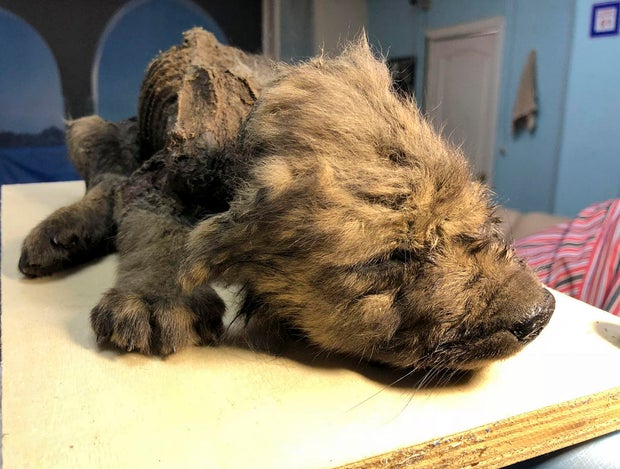Russian scientists on Monday unveiled a prehistoric puppy, believed to be 18, 000 years old, that was found in permafrost in the country Far East. Discovered last year in a lump of frozen mud near the city of Yakutsk, the puppy is unusually well-preserved.
“This puppy has all its limbs, pelage – fur, even whiskers. The nose is visible. There are teeth. We can determine due to some data that it is a male,” Nikolai Androsov, director of the Northern World private museum where the remains are stored, said at the presentation at the Yakutsk’s Mammoth Museum.
The pup was dubbed “Dogor,” a Yakutian word for friend. It appears to have died when it was two months old.
In recent years, Russia’s Far East has been plentiful for scientists studying the remains of ancient animals. As the permafrost melts, more and more parts of woolly mammoths, canines and other prehistoric animals are being discovered. Often it is mammoth tusk hunters who discover them.

When the puppy was discovered, scientists from the Stockholm-based Center for Palaeogenetics took a piece of bone to study its DNA.
“The first step was of course to send the sample to radio carbon dating to see how old it was and when we got the results back it turned out that it was roughly 18, 000 years old, “Love Dalén, professor of evolutionary genetics at the center, said in an online interview.
Further tests, however, left the scientists with more questions than answers – they couldn’t definitively tell whether it was a dog or a wolf.
“We have now generated a nearly complete genome sequence from it and normally when you have a two-fold coverage genome, which is what we have, you should be able to relatively easily say whether it’s a dog or a wolf, but we still can’t say and that makes it even more interesting, “Dalén sai d.
He added that the scientists are about to do a third round of genome sequencing, which might solve the mystery.







GIPHY App Key not set. Please check settings